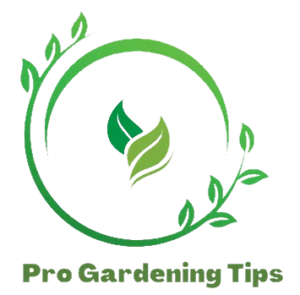Backyard Garden Challenges: Solutions for Common Problems
Table of Contents
Introduction: Overcoming Garden Obstacles
Gardening is a rewarding pursuit, but it often comes with its share of challenges. From unpredictable weather and soil issues to persistent pests and plant diseases, overcoming garden obstacles is crucial for cultivating a thriving garden. These challenges can initially seem daunting, but with a bit of knowledge and strategic planning, they can be managed effectively. Understanding the specific needs of your plants and the conditions of your garden space is key.

By learning how to address these common problems—whether through soil enrichment, pest control, or weather adaptation—you can enhance your garden’s health and productivity. This guide will explore practical solutions and preventative measures to help you turn obstacles into opportunities, ensuring that your garden not only survives but flourishes. Embrace these challenges with patience and creativity, and watch as your gardening efforts yield beautiful results.
Dealing with Poor Soil Quality
Dealing with poor soil quality is a common challenge for many gardeners, but with a strategic approach, it’s possible to transform your garden into a flourishing oasis. The key lies in understanding your soil’s deficiencies and making appropriate adjustments.
Testing and Amending Soil
Start by testing your soil to determine its pH level and nutrient content. Soil test kits are widely available and can provide insights into deficiencies in essential nutrients such as nitrogen, phosphorus, and potassium. Based on the results, you can amend your soil to address specific needs. Common amendments include compost, which improves soil structure and adds nutrients, and lime or sulfur, which adjusts pH levels. Organic matter is particularly valuable as it enhances soil fertility, water retention, and drainage. For heavy clay soils, incorporating sand and organic matter can improve texture and prevent waterlogging. Conversely, sandy soils benefit from added compost to increase moisture retention and nutrient-holding capacity.
Choosing Plants for Challenging Conditions
Selecting the right plants for your soil type is crucial. Some plants are more tolerant of poor soil conditions than others. For clay soils, consider plants like daylilies, hostas, and black-eyed Susans, which thrive despite compacted, heavy soil. For sandy soils, opt for drought-tolerant species such as lavender, sedum, or coneflowers that can handle lower moisture levels. Native plants are also a wise choice, as they are adapted to local soil conditions and generally require less maintenance.
Additionally, consider planting ground covers to help stabilize soil and prevent erosion. By matching plants to your soil’s characteristics, you can create a more resilient garden that thrives despite initial soil challenges. Addressing soil quality through testing, amending, and choosing the right plants can significantly enhance your garden’s health and productivity. With these strategies, you’ll be well-equipped to tackle poor soil conditions and enjoy a vibrant, thriving garden.
Managing Water Issues: Too Much or Too Little
Managing water issues is essential for a healthy garden, as both excess and deficiency can hinder plant growth. Addressing these challenges involves implementing solutions tailored to specific conditions, whether dealing with waterlogged soil or dry conditions.
Solutions for Waterlogged Soil
Excess water in the garden can lead to root rot and other issues. To manage waterlogged soil, start by improving drainage. Incorporate organic matter like compost into the soil to enhance its structure and increase drainage. If waterlogging is persistent, consider installing drainage systems such as French drains or using raised beds to elevate plant roots above saturated soil. Another effective method is creating berms or mounds where plants can be grown in well-draining soil, effectively diverting excess water away. Additionally, avoid overwatering and ensure that any irrigation systems are properly adjusted to prevent contributing to the problem.
Efficient Watering Techniques for Dry Conditions
In contrast, dry conditions require careful watering to ensure plants receive adequate moisture. Start by assessing your soil’s water-holding capacity. Mulching around plants helps retain moisture, reduce evaporation, and regulate soil temperature. Water deeply and less frequently to encourage deep root growth; shallow, frequent watering can lead to weak root systems. Implementing drip irrigation systems can also be beneficial as they deliver water directly to the plant’s roots, minimizing waste and ensuring efficient water use.
Additionally, consider watering early in the morning to reduce evaporation losses and ensure the water reaches plant roots before the heat of the day. By addressing both waterlogged soil and dry conditions with these tailored solutions, you can create a more balanced and resilient garden environment. Proper water management ensures that your plants receive the optimal conditions they need to thrive, regardless of the challenges posed by their environment.
Pest and Disease Control: Natural Solutions
Effective pest and disease control is crucial for maintaining a healthy garden, and natural solutions offer eco-friendly alternatives to conventional methods. Understanding common pests and diseases, along with implementing organic control methods, can help protect your plants while minimizing environmental impact.
Identifying Common Pests and Diseases
Recognizing early signs of pests and diseases is key to managing them effectively. Common garden pests include aphids, which cause distorted plant growth and sticky residues, and slugs, which feed on leaves, leaving behind ragged holes. Other frequent issues involve diseases such as powdery mildew, characterized by white, powdery spots on leaves, and blight, which leads to dark, sunken spots on fruits and leaves. Regularly inspect your plants for unusual symptoms, and familiarize yourself with common pests and diseases in your region. Early identification helps in applying appropriate natural remedies before problems escalate.
Organic Methods for Control and Prevention
Natural control methods offer safe alternatives to chemical treatments. For pest management, introduce beneficial insects like ladybugs and lacewings that prey on aphids and other harmful insects. Neem oil and insecticidal soaps can be used to target pests without harming beneficial organisms. Companion planting is another effective strategy; for instance, planting marigolds can deter nematodes and other pests. To combat diseases, ensure proper plant spacing for good air circulation and avoid overhead watering, which promotes fungal growth.
Use organic fungicides like sulfur or copper sprays for disease management. Additionally, applying compost and mulch enhances soil health, boosting plant resilience against pests and diseases. By focusing on identification and organic control methods, gardeners can manage pests and diseases effectively while promoting a healthier garden ecosystem. Embracing these natural solutions helps maintain balance and supports sustainable gardening practices.
Handling Garden Space Limitations
Handling garden space limitations requires creative strategies to ensure that even small or unconventional areas can support a productive and aesthetically pleasing garden. By focusing on maximizing small spaces and utilizing vertical and container gardening techniques, you can effectively make the most of your available area.

Maximizing Small Spaces
In limited garden spaces, strategic planning is crucial. Opt for high-yield crops that offer maximum productivity in minimal space, such as lettuce, radishes, and herbs. Use space-saving planting methods like square foot gardening, which organizes plants in a grid to make efficient use of the area. Raised beds are another excellent option; they provide defined planting areas and can be built to fit any available space, from tiny yards to urban environments. Additionally, consider incorporating plant combinations that grow well together, known as companion planting, to optimize space and improve plant health. For example, planting dwarf varieties of vegetables and herbs can also help manage space effectively.
Vertical Gardening and Container Solutions
Vertical gardening is an innovative way to utilize vertical space, making it ideal for small gardens. Install trellises, arbors, or wall-mounted planters to grow climbing plants like cucumbers, tomatoes, and beans. Vertical gardens can also include hanging baskets or tiered shelves for growing a variety of herbs and flowers. These methods not only save ground space but also add visual interest to your garden. Container gardening offers further flexibility, allowing you to grow plants in pots or other containers.
Choose containers of various sizes to accommodate different plants, from vegetables to flowering annuals. Containers can be placed on patios, balconies, or even steps, making it possible to garden in virtually any space. Ensure containers have proper drainage and use quality potting mix to support healthy plant growth. By implementing these space-saving techniques, you can create a vibrant and productive garden even in limited areas. Whether through vertical gardening or strategic container use, these methods allow you to overcome space constraints and enjoy a flourishing garden.
Conclusion: Thriving Despite Challenges
Thriving despite challenges is a hallmark of successful gardening. Whether you’re navigating poor soil, water issues, pests, or limited space, embracing innovative solutions and natural methods can transform obstacles into opportunities for growth. By testing and amending soil, choosing resilient plants, and employing effective water management techniques, you lay the foundation for a flourishing garden. Incorporating natural pest control methods and utilizing space-saving strategies like vertical and container gardening further enhances your ability to adapt and thrive.
Each challenge faced offers a chance to refine your gardening skills and deepen your connection with nature. With patience, creativity, and a willingness to learn, you can overcome any hurdle and cultivate a vibrant, productive garden. Embrace these challenges as part of your gardening journey and celebrate the beauty and bounty that emerge from your efforts.
